Thingiverse
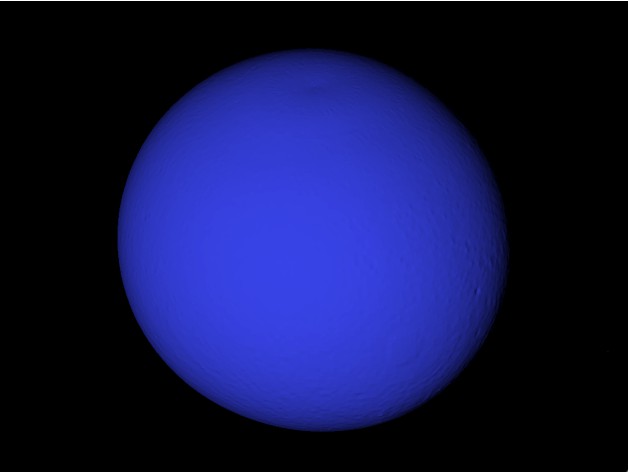
HD 189733 A b heat map scaled one in one billion by tato_713
by Thingiverse
Last crawled date: 3 years, 3 months ago
This is the first exoplanet with its global surface mapped in any way. The map is an infrared emission map, that is the radiation from its surface temperature. It has nothing to do with global shape or topography; it is a tidal locked gas planet, so its true shape is spherical, more spherical than Solar System gas giant Jupiter or Saturn, since its longer rotational period. It could be assumed that while hotter the place, more inflated the atmosphere is, so higher is the relief. If this is true, the topography in this model is still extremely exaggerated to make it more noticeable, about 15% of the radius, giving the model an egg shape. The star-facing direction (since it is tidal locked) of every model in this post is the positive X-axis. For Earth sized exoplanets, see this.
The file's names explained: name_1_x_10_y.stl is 1 : x * 10y. So _1_6_10_7 is 1:600000000 or one in 60 million.
HD 189733 A b
This is the closest know transiting hot Jupiter, about 1.14 times Jupiter's diameter, and it's one of the best studied of this kind of planet. A hot Jupiter is a planet of jovian size (bigger than Saturn) that orbits very close to its star. It's tidal locked, as expected in planets orbiting that close. It orbit the main star of a binary system, a orange K-type star and a red M-type dwarf. The infrared emission indicates that the hottest longitude is 30° west to the star-facing meridian. This is because the day to night gas redistribution; with winds up to supersonic speeds. By the spectre of the planet, is know to be blue, and it's probably sign of presence of silicate material within its atmosphere. This led to the speculation that it may have "rains of molten glass" within it. This planet has the most depth transit of its star viewed from Earth, and it was possible to detect the volatile escaping from it.
Type: Planet.
Orbit: HD 189733 A.
Distance to the Sun: 64.5 ly.
Orbital period: 2 d 5 h 15 min
Composition: Water vapor, oxygen, organics and silicate materials.
Density: ~0.98 g/cm3.
Dimensions: ~162000 km
Model scale: 1:1x109 (16cm)
Other astronomical objects
Object
Scale [1:x]
K = 103 (thousand)M = 106 (million)G = 109 (billion)
Image
Inner planets and moons
Mercury
60M,
120M
Venus
60M,
120M,
250M
Earth
60M,
120M,
250M
Luna
20M,
60M
Mars
60M,
120M
Phobos and Deimos
200K,
500K
Artificial
Salyut 7
40, 48, 80, 160
Near Earth Asteroids
Moshup and Squannit
8K,
20K,
40K
Ra-Shalom
20K,
40K
Castalia
8K,
20K,
40K
Bacchus
8K,
20K
Bennu
3K,
8K
Ryugu
8K,
20K
Geographos
40K,
80K
Phaethon
40K,
80K
Itokawa
3K,
8K
Eros
200K,
500K
Mithra
20K,
40K
Golevka
8K
Toutatis
40K,
80K
Main Asteroid Belt
Gaspra
200K
Annefrank
40K,
80K
Braille
20K,
40K
Vesta
4M,
10M
Šteins
40K,
80K,
200K
Iris
2M,
4M
Hebe
1M,
2M,
4M
Lutetia
1M,
2M
Julia
1M,
2M,
4M
Mathilde
500K,
1M
Juno
2M,
4M
Ceres
4M,
10M
Pallas
4M,
10M
Kleopatra
2M,
4M
Ida
500K,
1M
Psyche
2M,
4M
Interamnia
2M,
4M
Hygiea
2M,
4M,
10M
Antiope
1M,
2M
Jovian System
Jupiter
1G
Amalthea
2M,
4M
Thebe
1M,
2M
Io
20M,
60M
Europa
20M,
60M
Ganymede
60M,
120M
Callisto
60M,
120M
Saturn System
Saturn
500M,
1G
Pan, Daphnis and Atlas
80K,
200K,
500K,
1M
Prometheus and Pandora
1M,
2M
Janus and Epimetheus
2M,
4M
Mimas
2M,
4M,
10M
Methone, Anthe and Pallene
40K,
80K
Enceladus
4M,
10M
Tethys
10M
Telesto and Calypso
200K,
500K
Dione
10M
Helene
500K,
1M
Rhea
10M,
20M
Titan
60M,
120M
Hyperion
2M,
4M
Iapetus
10M,
20M
Phoebe
2M,
4M
Uranian System
Uranus
250M,
500M,
1G
Puck
1M,
2M,
4M
Miranda
4M,
10M
Ariel
10M
Umbriel
10M
Titania
10M,
20M
Oberon
10M,
20M
Neptunian System
Neptune
250M,
500M,
1G
Larissa
2M,
4M
Proteus
2M,
4M,
10M
Triton
20M
Comets
Tempel 1
40K,
80K,
200K
Wild 2
40K,
80K
Churyumov-Gerasimenko
40K,
80K
Hartley 2
20K,
40K,
80K
Borrelly
40K,
80K,
200K
Halley
80K,
200K
Centaurs and TNOs
Hidalgo
500K, 1M
Chariklo
2M,
4M
Pluto and Charon
10M,
20M
Styx, Nix, Kerberos and Hydra
500K,
1M
Haumea, Namaka and Hiʻiaka
10M,
20M
Arrokoth
200K,
500K,
1M
Largest TNOs and their moons
10M,
20M
Extrasolar
Exoplanets
120M,
250M,
500M
Nearest white dwarfs
120M,
250M
HD 189733 b
1G
Pulsars
200K,
500K
Cygnus X-1 accretion disk
10M,
20M
Sky maps
Heliosphere
7.5*1013, 1.5*1014
Constellations
-
CMBR
2*1028
Ancient
Earth (540 Mya to 20 Mya)
60M,
120M,
250M
Luna (4 Gya)
20M,
60M
Hypothetical and simulations
Planet Nine
250M,
500M
Cube planet
60M,
120M,
250M
Science Fiction
Ghroth
4M,
10M
Arda
60M,
120M
B612
10, 20, 32, 40
Mesklin
500M,
1G
Arrakis
60M,
120M
Borg cube
20K,
40K
Pern
60M,
120M
Europa Monolith
200K,
500K
Leonora Christine
500, 600, 1K, 3K
Death Star
1M,
2M
Starkiller Base
4M,
10M
Nirn, Secunda and Masser
20M,
60M,
120M
Independence Day mothership
2M,
4M,
10M
Arrival heptapod spaceship
1K,
3K,
8K
Halo Array
4M,
10M, 20M, 60M
Gem Homeworld
120M, 250M, 500M
Misc
Mars (1962 reconstruction)
60M,
120M
Flat Earth
250M
Expanding Earth
60M, 120M
The file's names explained: name_1_x_10_y.stl is 1 : x * 10y. So _1_6_10_7 is 1:600000000 or one in 60 million.
HD 189733 A b
This is the closest know transiting hot Jupiter, about 1.14 times Jupiter's diameter, and it's one of the best studied of this kind of planet. A hot Jupiter is a planet of jovian size (bigger than Saturn) that orbits very close to its star. It's tidal locked, as expected in planets orbiting that close. It orbit the main star of a binary system, a orange K-type star and a red M-type dwarf. The infrared emission indicates that the hottest longitude is 30° west to the star-facing meridian. This is because the day to night gas redistribution; with winds up to supersonic speeds. By the spectre of the planet, is know to be blue, and it's probably sign of presence of silicate material within its atmosphere. This led to the speculation that it may have "rains of molten glass" within it. This planet has the most depth transit of its star viewed from Earth, and it was possible to detect the volatile escaping from it.
Type: Planet.
Orbit: HD 189733 A.
Distance to the Sun: 64.5 ly.
Orbital period: 2 d 5 h 15 min
Composition: Water vapor, oxygen, organics and silicate materials.
Density: ~0.98 g/cm3.
Dimensions: ~162000 km
Model scale: 1:1x109 (16cm)
Other astronomical objects
Object
Scale [1:x]
K = 103 (thousand)M = 106 (million)G = 109 (billion)
Image
Inner planets and moons
Mercury
60M,
120M
Venus
60M,
120M,
250M
Earth
60M,
120M,
250M
Luna
20M,
60M
Mars
60M,
120M
Phobos and Deimos
200K,
500K
Artificial
Salyut 7
40, 48, 80, 160
Near Earth Asteroids
Moshup and Squannit
8K,
20K,
40K
Ra-Shalom
20K,
40K
Castalia
8K,
20K,
40K
Bacchus
8K,
20K
Bennu
3K,
8K
Ryugu
8K,
20K
Geographos
40K,
80K
Phaethon
40K,
80K
Itokawa
3K,
8K
Eros
200K,
500K
Mithra
20K,
40K
Golevka
8K
Toutatis
40K,
80K
Main Asteroid Belt
Gaspra
200K
Annefrank
40K,
80K
Braille
20K,
40K
Vesta
4M,
10M
Šteins
40K,
80K,
200K
Iris
2M,
4M
Hebe
1M,
2M,
4M
Lutetia
1M,
2M
Julia
1M,
2M,
4M
Mathilde
500K,
1M
Juno
2M,
4M
Ceres
4M,
10M
Pallas
4M,
10M
Kleopatra
2M,
4M
Ida
500K,
1M
Psyche
2M,
4M
Interamnia
2M,
4M
Hygiea
2M,
4M,
10M
Antiope
1M,
2M
Jovian System
Jupiter
1G
Amalthea
2M,
4M
Thebe
1M,
2M
Io
20M,
60M
Europa
20M,
60M
Ganymede
60M,
120M
Callisto
60M,
120M
Saturn System
Saturn
500M,
1G
Pan, Daphnis and Atlas
80K,
200K,
500K,
1M
Prometheus and Pandora
1M,
2M
Janus and Epimetheus
2M,
4M
Mimas
2M,
4M,
10M
Methone, Anthe and Pallene
40K,
80K
Enceladus
4M,
10M
Tethys
10M
Telesto and Calypso
200K,
500K
Dione
10M
Helene
500K,
1M
Rhea
10M,
20M
Titan
60M,
120M
Hyperion
2M,
4M
Iapetus
10M,
20M
Phoebe
2M,
4M
Uranian System
Uranus
250M,
500M,
1G
Puck
1M,
2M,
4M
Miranda
4M,
10M
Ariel
10M
Umbriel
10M
Titania
10M,
20M
Oberon
10M,
20M
Neptunian System
Neptune
250M,
500M,
1G
Larissa
2M,
4M
Proteus
2M,
4M,
10M
Triton
20M
Comets
Tempel 1
40K,
80K,
200K
Wild 2
40K,
80K
Churyumov-Gerasimenko
40K,
80K
Hartley 2
20K,
40K,
80K
Borrelly
40K,
80K,
200K
Halley
80K,
200K
Centaurs and TNOs
Hidalgo
500K, 1M
Chariklo
2M,
4M
Pluto and Charon
10M,
20M
Styx, Nix, Kerberos and Hydra
500K,
1M
Haumea, Namaka and Hiʻiaka
10M,
20M
Arrokoth
200K,
500K,
1M
Largest TNOs and their moons
10M,
20M
Extrasolar
Exoplanets
120M,
250M,
500M
Nearest white dwarfs
120M,
250M
HD 189733 b
1G
Pulsars
200K,
500K
Cygnus X-1 accretion disk
10M,
20M
Sky maps
Heliosphere
7.5*1013, 1.5*1014
Constellations
-
CMBR
2*1028
Ancient
Earth (540 Mya to 20 Mya)
60M,
120M,
250M
Luna (4 Gya)
20M,
60M
Hypothetical and simulations
Planet Nine
250M,
500M
Cube planet
60M,
120M,
250M
Science Fiction
Ghroth
4M,
10M
Arda
60M,
120M
B612
10, 20, 32, 40
Mesklin
500M,
1G
Arrakis
60M,
120M
Borg cube
20K,
40K
Pern
60M,
120M
Europa Monolith
200K,
500K
Leonora Christine
500, 600, 1K, 3K
Death Star
1M,
2M
Starkiller Base
4M,
10M
Nirn, Secunda and Masser
20M,
60M,
120M
Independence Day mothership
2M,
4M,
10M
Arrival heptapod spaceship
1K,
3K,
8K
Halo Array
4M,
10M, 20M, 60M
Gem Homeworld
120M, 250M, 500M
Misc
Mars (1962 reconstruction)
60M,
120M
Flat Earth
250M
Expanding Earth
60M, 120M
Similar models
thingiverse
free

Wheel of Time Earth scaled one in sixty million by tato_713
...
flat earth
250m
expanding earth
60m, 120m
spaceship of ezekiel
80, 160
thingiverse
free

Visitors mothership scaled one in forty by tato_713
...
flat earth
250m
expanding earth
60m, 120m
spaceship of ezekiel
80, 160
thingiverse
free

4660 Nereus scaled one in eight thousand by tato_713
...
flat earth
250m
expanding earth
60m, 120m
spaceship of ezekiel
80, 160
thingiverse
free
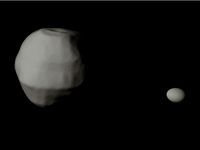
65803 Didymos and Dimorphos scaled one in eight thousand by tato_713
...
flat earth
250m
expanding earth
60m, 120m
spaceship of ezekiel
80, 160
thingiverse
free
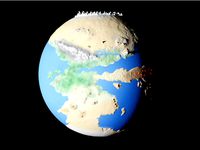
Eternia scaled one in sixty million by tato_713
...
flat earth
250m
expanding earth
60m, 120m
spaceship of ezekiel
80, 160
thingiverse
free

Citadel of Ricks scaled one in 200 thousand by tato_713
...it in the same scale with a city with similar population density, in which the landscapes of the citadel...
thingiverse
free

Gaijin flowership scaled one in three thousand by tato_713
...
flat earth
250m
expanding earth
60m, 120m
spaceship of ezekiel
80, 160
thingiverse
free

M87* photon ring scaled one in 1.5*10^15 by tato_713
...contrast, super masive black holes can have a density similar or even lower than water. this is because the...
thingiverse
free

Spaceship of Ezekiel scaled one in 160 by tato_713
...
flat earth
250m
expanding earth
60m, 120m
spaceship of ezekiel
80, 160
thingiverse
free

Rama scaled one in 500 thousand by tato_713
...
flat earth
250m
expanding earth
60m, 120m
spaceship of ezekiel
80, 160
189733
thingiverse
free

Elizabeth from BioShock Infinite by ToScH
...tosch thingiverse this is a remix of the thing 189733 i turned the model around, added some support and...
thingiverse
free

4660 Nereus scaled one in eight thousand by tato_713
...120m, 250m, 500m nearest white dwarfs 120m, 250m hd 189733 b 1g pulsars 200k, 500k cygnus x-1 accretion disk...
thingiverse
free

Visitors mothership scaled one in forty by tato_713
...120m, 250m, 500m nearest white dwarfs 120m, 250m hd 189733 b 1g pulsars 200k, 500k cygnus x-1 accretion disk...
thingiverse
free

Wheel of Time Earth scaled one in sixty million by tato_713
...120m, 250m, 500m nearest white dwarfs 120m, 250m hd 189733 b 1g pulsars 200k, 500k cygnus x-1 accretion disk...
thingiverse
free

Gaijin flowership scaled one in three thousand by tato_713
...120m, 250m, 500m nearest white dwarfs 120m, 250m hd 189733 b 1g pulsars 200k, 500k cygnus x-1 accretion disk...
thingiverse
free

65803 Didymos and Dimorphos scaled one in eight thousand by tato_713
...120m, 250m, 500m nearest white dwarfs 120m, 250m hd 189733 b 1g pulsars 200k, 500k cygnus x-1 accretion disk...
thingiverse
free

Citadel of Ricks scaled one in 200 thousand by tato_713
...120m, 250m, 500m nearest white dwarfs 120m, 250m hd 189733 b 1g pulsars 200k, 500k cygnus x-1 accretion disk...
thingiverse
free

Eternia scaled one in sixty million by tato_713
...120m, 250m, 500m nearest white dwarfs 120m, 250m hd 189733 b 1g pulsars 200k, 500k cygnus x-1 accretion disk...
thingiverse
free

Spaceship of Ezekiel scaled one in 160 by tato_713
...120m, 250m, 500m nearest white dwarfs 120m, 250m hd 189733 b 1g pulsars 200k, 500k cygnus x-1 accretion disk...
Tato
3ddd
$1

Tato 01, IL Loft
... om
стул tato 01 от итальянской компании il loft, размер: 700x500x840
источник: www.illoft.com
материалы в комплекте.
turbosquid
$8

TATO JIL TABLE LAMP
...l table lamp for download as jpg, 3ds, max, dxf, obj, and fbx on turbosquid: 3d models for games, architecture, videos. (1489908)
design_connected
$11

Biba Table Lamp
...biba table lamp designconnected tato italia biba table lamp computer generated 3d model. designed...
design_connected
$11

Jil Table Light
...jil table light designconnected tato italia jil table light computer generated 3d model. designed...
3d_sky
free

Tato 01, IL Loft
...1, il loft
3dsky
chair of the italian company of tato 01 il loft, size: 700x500x840 source: www.illoft.com
materials in the kit.
3dbaza
$3

Tato PIEDI REGOLABILI TABLE BY IGNAZIO GARDELLA (123600)
...tato piedi regolabili table by ignazio gardella (123600)
3dbaza
tato piedi regolabili by ignazio gardella table 3d model
thingiverse
free

Tato Cube 3 / Cube3 Extruder Original Hobbed & 608 Bearing by mdorignac
...ruder original hobbed & 608 bearing by mdorignac
thingiverse
tato cube 3 / cube3 extruder original hobbed & 608 bearing
thingiverse
free

Couch Phone-tato by mmarcoux98
... ability.
finally do let me know of other compatible phones and phones you would like a couch phone-tato for.
thanks and enjoy!
3dbaza
$3

Wallie Chandelier by Lorenza Bozzoli for Tato (137297)
... 928<br>xform: no<br>box trick: no<br>model parts: 2<br>render: v-ray<br>formats: 3ds max 2014, obj
3dbaza
$3

Anita Table Lamp by Lorenza Bozzoli for Tato (137153)
... 960<br>xform: no<br>box trick: no<br>model parts: 2<br>render: v-ray<br>formats: 3ds max 2014, obj
713
design_connected
$11

713
...713
designconnected
cassina 713 coffee tables computer generated 3d model. designed by theodore waddell.
turbosquid
free

glider PH-713
... available on turbo squid, the world's leading provider of digital 3d models for visualization, films, television, and games.
3ddd
free

Italamp fashion lighting 713
...13
3ddd
italamp , fashion
люстра - italamp fashion lighting 713
размеры - d60 см, h29 см
3ddd
$1

N-Light 713-03-52AC Antique Copper/713-03-12CH Polished Nickel
...ch polished nickel
3ddd
подвес
подвес в корабельном стиле
713-03-52ac antique copper n-light
713-03-12ch polished nickel n-light
3ddd
$1

tisserant as-713
...ch's , tisserant
3ds max 2014
3ds max 2011
fbx
obj
textures
materials
real size
3d_export
$60

Architecture 713 3D Model
...lege campus max street landscape commercial building medical hospital offices
architecture 713 3d model lotusmodel 49098 3dexport
3d_export
$150

3d building 713 3D Model
...erior vray sitting accesorie apartment home visualization sofa couch table chair
3d building 713 3d model kanhtart 46553 3dexport
3ddd
$1

NLight 713-03-52AC
...light , подвес
потолочная чаша - с шарниром.
внизу плафона - матовое рассеивающее стекло
3d_export
$50

3D Home 713 3D Model
... chair furniture texture table lamp apartment rug carpet restaurant hotel sitting
3d home 713 3d model richard3015 46995 3dexport
humster3d
$40

3D model of Acer Iconia Tab 7 (A1-713)
...d 3d model of acer iconia tab 7 (a1-713) in various file formats. all our 3d models were created maximally close to the original.
Billion
3d_export
$20

vc01 3D Model
...р…р в°рўрџ рўвђљрўс“р в°р в»р вµрўвђљ vc01 3d model billion 6654...
3d_export
$5

OIL STORAGE TANKER GAME READY LOW POLY
...ultra large crude carriers . tankers move approximately 2.0 billion metric tons (2.2 billion short tons) of oil every...
3d_export
$15

type 26 frigate
...surface combatant), with a total program cost of $60 billion the amount of the contract will increase as the...
3d_export
$14

solar system asset pack - blender
...and other things. the solar system is about 4.6 billion years old. it formed by gravity in a large...
thingiverse
free

A Billion Suns Tokens by CrazeyWayne
...a billion suns tokens by crazeywayne
thingiverse
some lettered tokens for a billion suns.
thingiverse
free

Billion Oyster Project Logo by billionoysterproject
...yster project logo by billionoysterproject
thingiverse
this is a 3d representation of the billion oyster project alternate logo.
thingiverse
free

a billion suns scale by peregrinovr
...- interstellar fleet battles.
if used in the standard configuration the piece is thin and a little flexible, but still resistant.
thingiverse
free

Square Gears by Billion
...quare gears by billion
thingiverse
just a couple of square gears and a frame to hold them more of a curiosity than useful thing.
thingiverse
free

Billion Suns UMA Fleet by JustaChris
...s
thingiverse
just a fleet for "a billion suns", mostly inspired by "the expanse" and "babylon 5".
thingiverse
free

A Billion Suns Jump Gate by SebChmiel
...he one with holes to each of the eight sides and trench are if you want to add leds. green stuff the trench after wiring is done.
Hd
3d_export
$7

Bread hd
...bread hd
3dexport
hd for you
3ddd
$1

Cintiq24 HD
...cintiq24 hd
3ddd
cintiq24 hd
design_connected
$16

Nova HD
...nova hd
designconnected
instashade nova hd computer generated 3d model.
turbosquid
$20

Neptune HD (Suport Full HD Render)
... available on turbo squid, the world's leading provider of digital 3d models for visualization, films, television, and games.
turbosquid
$4

HD skull
...l
turbosquid
royalty free 3d model hd skull for download as on turbosquid: 3d models for games, architecture, videos. (1207058)
3d_ocean
$2

Grass HD
... the time! grass hd with 4k textures want to make grass field? of course you can! tileable support! have any problem? contact me!
3d_export
$13

angel hd
...angel hd
3dexport
beautifuul!
turbosquid
$40

EAGLE HD
...urbosquid
royalty free 3d model eagle hd for download as obj on turbosquid: 3d models for games, architecture, videos. (1172720)
turbosquid
$2

HD Tree
...id
royalty free 3d model hd tree for download as fbx and obj on turbosquid: 3d models for games, architecture, videos. (1670118)
3ddd
$1

Microsoft / Zune HD
...microsoft / zune hd
3ddd
microsoft , плеер
zune hd, fully textured.
Heat
3d_export
$5

heat
...heat
3dexport
heat tool
3ddd
$1

electric heating
...electric heating
3ddd
обогреватель
electric heating
3d_export
$6

The heating module
...any questions also you can email to me. designed with solidworks 2017, render with keyshot **************************************
turbosquid
$2

Heating Radiator
...
royalty free 3d model heating radiator for download as blend on turbosquid: 3d models for games, architecture, videos. (1561908)
3d_export
$35

heating instalation with heat pump and solar system
...el , please contact me. before buying a model, you can try to download one of my free models and testing. thank you for watching.
turbosquid
$29

Heating Mantle
... available on turbo squid, the world's leading provider of digital 3d models for visualization, films, television, and games.
turbosquid
$25

Heating Radiator
... available on turbo squid, the world's leading provider of digital 3d models for visualization, films, television, and games.
turbosquid
$20
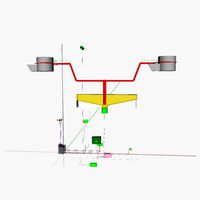
AT_airship_control_stand_(heated)
... available on turbo squid, the world's leading provider of digital 3d models for visualization, films, television, and games.
turbosquid
$20
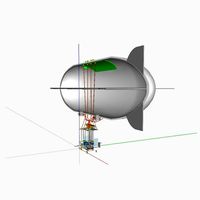
AT_airship_(heated)
... available on turbo squid, the world's leading provider of digital 3d models for visualization, films, television, and games.
turbosquid
$10

Heating radiator
... available on turbo squid, the world's leading provider of digital 3d models for visualization, films, television, and games.
B
3ddd
$1

B&B
...b&b
3ddd
b&b italia
statue b&b italy
3ddd
$1

B&B Italia
...b&b italia
3ddd
b&b italia
b&b; italia
3ddd
$1

b&b italia
...b&b italia
3ddd
b&b italia
b&b; italia
3ddd
$1

B&B LAZY
...b&b lazy
3ddd
b&b italia
b&b; lazy
3ddd
$1

B&B Italy
...b&b italy
3ddd
b&b italia
диван b&b; italy
3ddd
$1

b&b RAY
...b&b ray
3ddd
b&b italia , угловой
диван b&b; ray
3ddd
$1

B&B Beverly
... b&b italia , beverly
cтул beverly от b&b.; текстуры в архиве
3ddd
$1

B&B ITALIA
...lia , журнальный , круглый
стол b&b; italia
3ddd
$1

шезлонг B&B
...шезлонг b&b
3ddd
b&b italia , шезлонг
шезлонг b&b; terminal 1
3ddd
$1

B&B J.J
...b&b j.j
3ddd
b&b italia , журнальный
b&b;
j.j
45x40x49 cm
Map
3d_ocean
$5

Map
...map
3docean
geography map ocean travel world world map
a world map
3d_ocean
$5

Old Map
...old map
3docean
dirty map ocean old map paper pirates rotten travel world map
an old map
turbosquid
$3

Map
... available on turbo squid, the world's leading provider of digital 3d models for visualization, films, television, and games.
3d_ocean
$3

Map of Iran
...map of iran
3docean
flag iran map outline
an outline map of iran
3d_ocean
$2

Map of the USA
...map of the usa
3docean
america flag globe map united states usa
an outline map of the usa
3ddd
$1
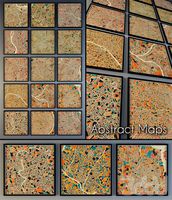
Abstract Maps
... город , picture
abstract maps by artist jazzberry blue
3d_ocean
$5

Honduras Map
...honduras map
3docean
3d cinema4d honduras map mapa
honduras map designed in cinema 4d r17
3d_ocean
$2

Map of Germany
...map of germany
3docean
black country europe germany gold map outline red yellow
a simple outline map of germany
3d_ocean
$2

Map of Australia
...map of australia
3docean
australia banner country down under earth flag globe map ocean south
an outline map of australia
3d_ocean
$2

Map of Russia
...of russia
3docean
asia banner earth europe flag globe map russia russian federation siberia sovjet union
an outline map of russia
Scaled
turbosquid
$40

Scale
... available on turbo squid, the world's leading provider of digital 3d models for visualization, films, television, and games.
turbosquid
$12

Scale
... available on turbo squid, the world's leading provider of digital 3d models for visualization, films, television, and games.
turbosquid
free

Scale
... available on turbo squid, the world's leading provider of digital 3d models for visualization, films, television, and games.
3d_export
$7

of scales
...s have a flat point of support. the samples are rendered in the standard cinema 4d renderer. enjoy your use and creative success.
3d_export
$5

scale knob
...scale knob
3dexport
scale knob
3d_export
$20

cartoon weight scale or bathroom scale
...cartoon weight scale or bathroom scale
3dexport
texture size:512px number of texture:1 texture format: png
3d_ocean
$4

Bathroom scale
... the model is ready to import and render in all formats. it comes with a .tif diffuse texture. for other cool stuff check out ...
3d_export
free

scales 3
...scales 3
3dexport
3d_export
$10

ruller scale
...ere 4 types of formats are attached with texture, i.e. the original size of the scale with stl printable file is 30 cm in length!
turbosquid
$26

Scientific Scale
...
royalty free 3d model scientific scale for download as blend on turbosquid: 3d models for games, architecture, videos. (1639609)
One
turbosquid
$2

one plus one
... available on turbo squid, the world's leading provider of digital 3d models for visualization, films, television, and games.
3ddd
$1

One
...one
3ddd
стул
офисный стул one
3ddd
free

one
...
palazetti one ,http://palazzetti.ca/index.php/component/virtuemart/seating/armchairs-lounges/one-chair-detail?itemid=0
turbosquid
$35

One A
... available on turbo squid, the world's leading provider of digital 3d models for visualization, films, television, and games.
turbosquid
free

One
... available on turbo squid, the world's leading provider of digital 3d models for visualization, films, television, and games.
3ddd
$1

Стул One
...стул one
3ddd
one , magis
кресло magis s.p.a , one
3ddd
$1

Стул One
...стул one
3ddd
one , magis
кресло one chair (4star), magis s.p.a.
3d_export
$20

xbox one
...xbox one
3dexport
xbox one
3ddd
$1

xbox one
... консоль , джойстик
xbox one + kinect + gamepad
3ddd
free

One
...nstantin grcic
артикул ct-284 (cosmorelax.ru)
размер l36xw41xh82.5, sh 77cm
цвет черный, красный
материал алюминий
вес 2,5 кг
